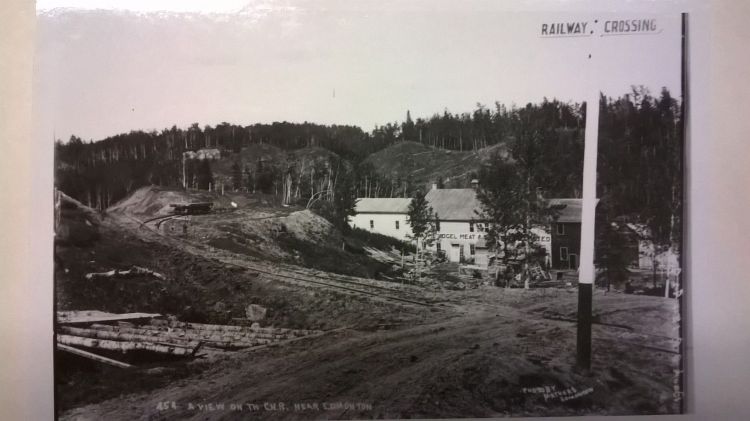Researchers are digging up an area along the Mill Creek Ravine, uncovering a part of Edmonton’s “gross” history that is often forgotten or misunderstood.

“People have this idea of this being a really natural area and that it’s always been this way, but it hasn’t,” said Josalyne Head, a MacEwan University anthropology student.
A group of eight MacEwan University students are working alongside archaeologist Haeden Stewart to unearth remnants of the Vogel’s Meat Packing Plant. The facility was in operation in the early 1900s before it was shut down and demolished about a hundred years ago.
Stewart said it was one of the smaller meat packing plants in the area, and only had about 20 workers.
READ MORE: Big changes proposed for Edmonton’s Mill Creek Ravine
“One of the reasons why they’re so close to the creek is that they’re pumping all of their garbage, all of their meat-packing effluence, down there and it’s all going into the creek,” Stewart said.
“It’s kind of a gross and not well understood part of Edmonton’s history, but we’re trying to rectify that.”
The team has been uncovering dozens of bones, mainly from cows, discarded from the plant.
“This is what we think was the dumping area for the plant,” Head said, describing one of the excavation sites.
“Here, we have all the bones that people don’t use for meat processing, so the face, head and feet bones.”
Stewart is a PhD candidate from the University of Chicago. Last summer he excavated artifacts from a shanty town at Ross Acreage, which was downstream from Vogel’s.
On Saturday, Edmontonians were invited to the site to learn about the project. Kyle Swystun lives nearby and brought his two young children.
“We walk over top of this all the time,” he said. “Obviously I was a bit oblivious to the meat packing plant being right here.”
Researchers have also been excavating bricks, glass and concrete from the old plant to hopefully gain a better understanding of what life was like for workers at the time.
The archaeological dig wraps up in a couple of weeks then the artifacts will be further analysed for Stewart’s dissertation. They’ll eventually all be turned over to the Royal Alberta Museum.





Comments